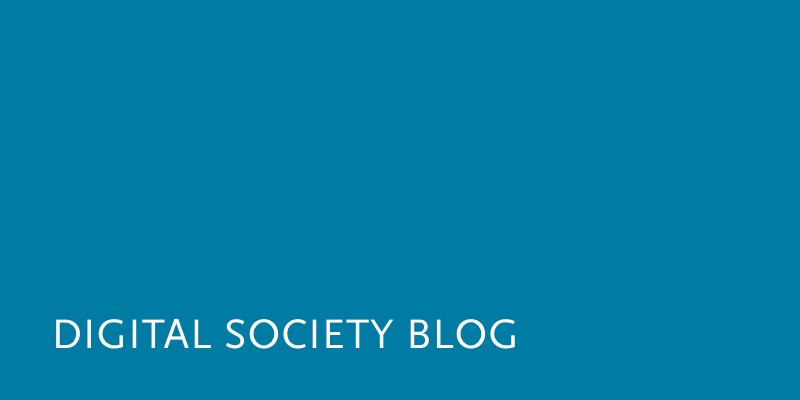Unsere vernetzte Welt verstehen

Elephant in the Lab macht Probleme in der Wissenschaft ausfindig
Wir gebrauchen den Ausdruck „ein Elefant im Raum” um auf ein offensichtliches Problem hinzuweisen, über das jedoch niemand spricht. Seit Juli 2017 beschäftigt sich das Blog Journal Elephant in the Lab mit eben dieser Art von Problemen innerhalb der Wissenschaft, welche laut den Herausgebern Martin Schmidt, Christian Kobsda und Benedikt Fecher massenhaft existieren.
In the first few months, the website covered the issue of authorship in science across several posts. The authors pose the overarching question: is authorship still the right way to signify the qualitative contribution to the field? To illustrate this, they analyzed a large Scopus database differentiating between the top 20 authors (those who publish most) in 27 sub-disciplines. For most of disciplines they analyzed, the number of authors per article increases over time, although only slightly. This can be interpreted as evidence for the increasing complexity of scientific problems and the need for researchers to collaborate.
The data collected from one sub-discipline – Physics and Astronomy – is especially notable. With a mean of 1,268 authors per paper and a maximum of 5,154 authors of one article, this discipline features by far the most authors. In 2016, over 50% of the articles in Physics and Astronomy have more than 1,000 authors (read the article here). In cases like this, the editors of Elephant in the Lab argue that the idea of authorship is led ad absurdum, and it would make sense to reflect on new ways to show the qualitative contribution to a complex product. In their latest post, the authors refer to film credits as an example.
During the next few months, elephantinthelab.org will spot more of these “elephants” in science, including career chances for young researchers, the question of what constitutes scientific impact (see also the interview with Jeremy Berg), gender equalities, or experiment replicability. While the editors wrote the most articles themselves in the first few months, they want to involve more external authors in future. As Christian Kobsda points out: “Our long-term goal is to offer a platform for researchers to reflect on science, its system and habits and in particular those problems that science faces and nobody talks about .”
To contribute to elephantinthelab.org is easy. As a potential author, you can pick between five different publication formats. These are Opinion pieces, Short Analyses, Moonshots, Interviews, and How-to-articles, and they can be sent to eitl@hiig.de. The article is checked editorially by the elephant-team before it is published and tagged with a so-called digital object identifier (DOI). This makes it easier to cite articles from the website as well as to track their impact (the website shows the altmetric-score for each post) and also illuminates why the founders call elephantinthelab.org a “blog journal”.
Kobsda: “We combine the speed and flexibility of a blog with some of the features of traditional journals, for example the DOIs and the different formats. This is why elephantinthelab.org is neither a journal nor a blog. It is a blog journal.”
| Dieser Beitrag spiegelt die Meinung des Autors und weder notwendigerweise noch ausschließlich die Meinung des Institutes wider. Für mehr Informationen zu den Inhalten dieser Beiträge und den assoziierten Forschungsprojekten kontaktieren Sie bitte info@hiig.de. |
Dieser Beitrag spiegelt die Meinung der Autorinnen und Autoren und weder notwendigerweise noch ausschließlich die Meinung des Institutes wider. Für mehr Informationen zu den Inhalten dieser Beiträge und den assoziierten Forschungsprojekten kontaktieren Sie bitte info@hiig.de
Forschungsthemen im Fokus
Digitale Zukunft der Arbeitswelt
HIIG Monthly Digest
Jetzt anmelden und die neuesten Blogartikel gesammelt per Newsletter erhalten.
Making Sense of the Future: Neue Denksportaufgaben für digitale Zukünfte im Unterricht
"Making Sense of the Future" ist ein Werkzeugkasten, der Zukunftsforschung und Kreativität kombiniert, um digitale Zukünfte neu zu gestalten.
Liebling, wir müssen über die Zukunft sprechen
Können Zukunftsstudien den Status quo jenseits der akademischen Welt in Frage stellen und den öffentlichen Dialog als fantasievollen Raum für kollektive Unternehmungen nutzbar machen?
Digitalisierung erkunden: Indigene Perspektiven aus Puno, Peru
Was sind indigene Perspektiven der Digitalisierung? Die Quechuas in Peru zeigen Offenheit für die Anforderungen an das Wachstum ihrer digitalen Wirtschaft.





